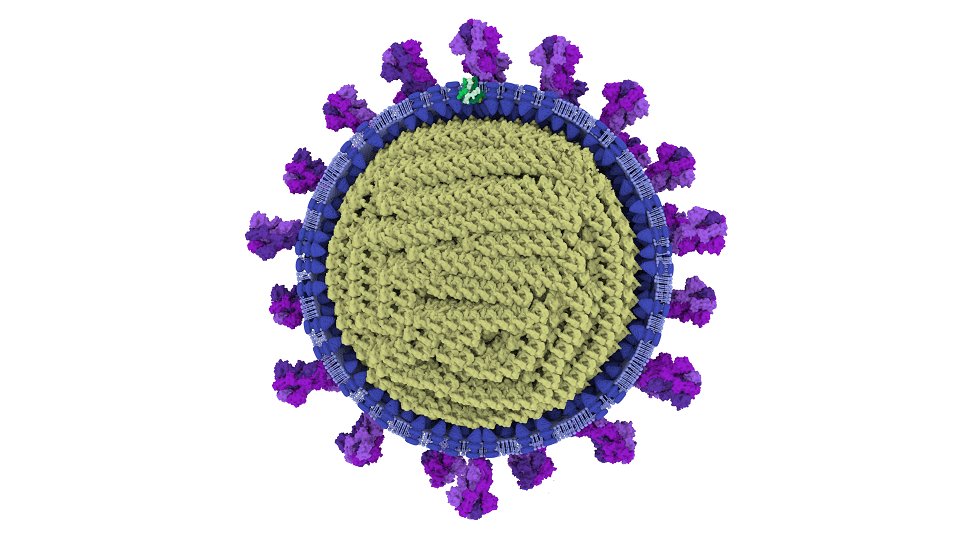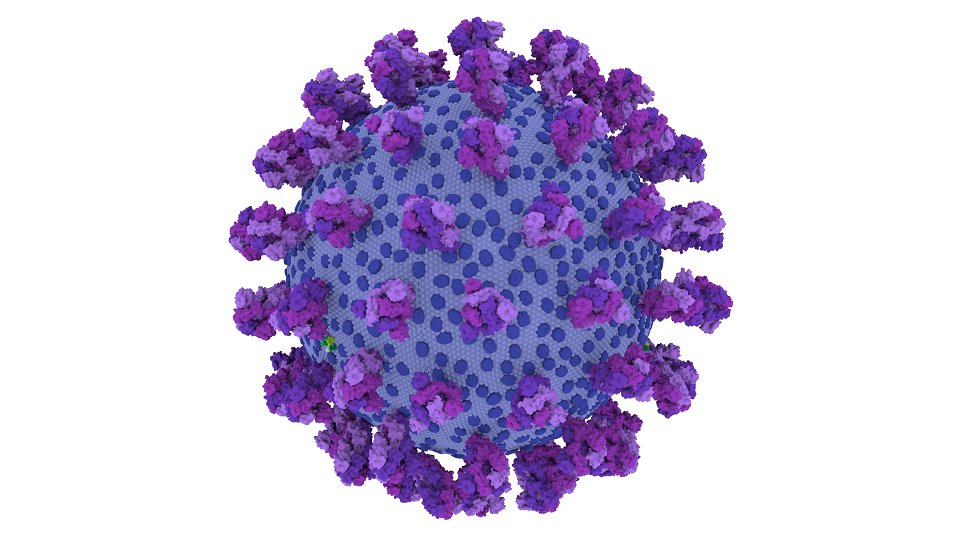
Earlier this year, @Scient_Art collaborated with us to produce one of the first detailed 3D models of the #SARSCoV2 virus particle. To round off 2021 she's updated her model, and it looks great (1/N) 

... the first model drew heavily on existing work on related viruses (SARS-CoV-1 and MHV). The updated model has an improved representation of the spike protein, building on the detailed model from @RommieAmaro's lab (pubs.acs.org/doi/10.1021/ac…) (2/N) 

The spacing and flexing of the spikes was also updated based on cryoEM data, particularly from the labs of @BriggsGroup (disq.us/t/3r34r8p) and @drlisai (doi.org/10.1016/j.cell…) (3/N) 

As well as improving the rendering, @Scient_Art has produced some videos, one showing the flexibility of the virus particle, with the spike particles drifting and flexing... (4/N)
... and another more detailed ones with the structures labelled and a cutaway view of the interior (5/N)
@Scient_Art has written a great summary of how she did all this (with references) at her website: scientart.com (6/N) 

All models are available through Creative Commons (CC-BY NC Annabel Slater / MRC-University of Glasgow Centre for Virus Research).
We hope they're useful for you!
Details of the earlier models can also be found here:
(7/ENDS) @CVRinfo #scicomm #sciart
We hope they're useful for you!
Details of the earlier models can also be found here:
https://twitter.com/CVRHutchinson/status/1265554278766297089?s=20
(7/ENDS) @CVRinfo #scicomm #sciart
• • •
Missing some Tweet in this thread? You can try to
force a refresh





